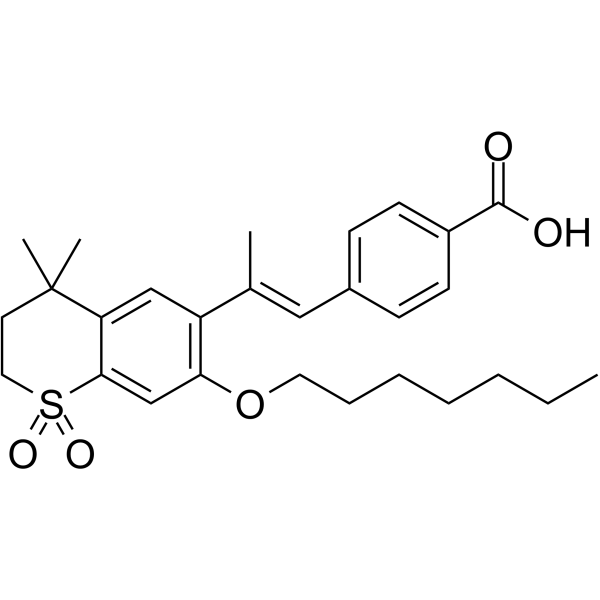Anticoagulant effects of synthetic retinoids.
T Koyama, M Shibakura
文献索引:Leuk. Lymphoma 31(1-2) , 71-80, (1998)
全文:HTML全文
摘要
We have recently found that retinoic acids (RAs) evoke anticoagulant effect by upregulating thrombomodulin (TM) and downregulating tissue factor (TF) expression in acute promyelocytic leukemia (APL) and monoblastic leukemia cells. Two classes of nuclear RA receptors, termed retinoic acid receptors (RARs) and retinoid X receptors, have been identified. Each receptor class consists of three subtypes. We have used several synthetic retinoids to find which receptor subtypes are involved in the regulation of TM and TF expression in APL cells NB4, monoblastic leukemia cells U937 and human umbilical vein endothelial cells (HUVECs). Am80, which does not have a binding affinity to RARgamma, Ch55, which does not bind to cytoplasmic retinoic acid binding protein (CRABP), and a specific RARalpha agonist Ro40-6055, have shown to upregulate TM and downregulate TF in NB4 and U937 cells similar to all-trans RA (ATRA). A specific RARalpha antagonist Ro41-5253 efficiently suppressed the upregulation of TM by ATRA and Am80 in NB4 cells, U937 cells and HUVECs. In contrast, only when both RARalpha and RARbeta antagonists were preincubated, downregulation of TF by the retinoids was suppressed in NB4 cells. These results indicate the mechanically distinct transactivation and transrepression functions of RARs, the major role of RARalpha in TM upregulation by retinoids in leukemic cells and HUVECs and the cooperative role of RARalpha and RARbeta in TF downregulation by retinoids. This implies that synthetic retinoids will provide a very useful means to control distinct targets, TM and TF genes, at the level of transcription. Synthetic retinoids may develop as new type of antithrombotic agents which may change the character of cells as well as act as malignant cell differentiation inducers.
相关化合物
| 结构式 | 名称/CAS号 | 分子式 | 全部文献 |
|---|---|---|---|
 |
Ro 41-5253
CAS:144092-31-9 |
C28H36O5S |
|
Effect of all-trans-retinoic acid on enterovirus 71 infectio...
2014-05-01 [Br. J. Nutr. 111(9) , 1586-93, (2014)] |
|
Retinoic acid inhibits in vivo interleukin-2 gene expression...
2009-04-01 [Immunology 126(4) , 514-22, (2009)] |
|
Overexpression of mucin genes induced by interleukin-1 beta,...
2002-06-01 [Exp. Lung Res. 28(4) , 315-32, (2002)] |
|
Retinoic acid signaling is necessary for the development of ...
1999-09-01 [Dev. Biol. 213(1) , 180-93, (1999)] |
|
Retinoids and human breast cancer: in vivo effects of an ant...
2005-02-28 [Cancer Lett. 219(1) , 27-31, (2005)] |